Parts of the violin: Encyclopedia of violin, search by letter
We will list some common violin nouns in order of 26 English letters, some of which have other names. Continuous update...
B
Ball-end&Loop-end. The simple mechanism at the tailpiece end of the string allows the string to hang from the fine-tune. Different styles correspond to different fine-tune styles, The double-hook fine-tuning is suitable for ball-end when using, pass the strings through the gap between the two hooks, this is easy adjustment, as shown; Single-hook fine-tuning is suitable for loop-end, just hang the loop-end on the hook when using, you can put a string protector on the part where the string contacts the hook to protect the strings, this not easy adjustment, but the strings are longer and more conducive to vibration, the sound will be better. As shown. In general, beginners use ball-end, and professional players use loop-end.
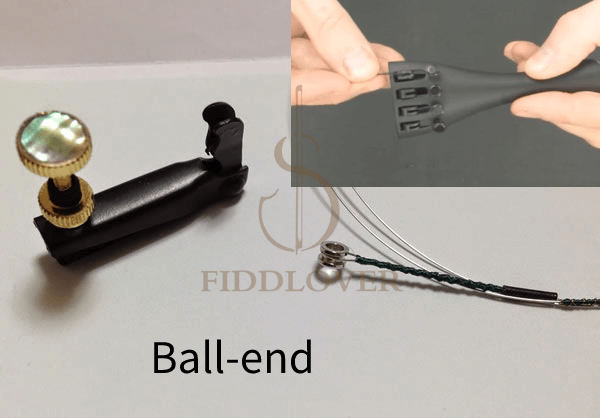

Backplate. The back plate is the back of the violin body. The back plate is generally made of maple wood. Maple not only has suitable hardness but also has beautiful patterns, which is very suitable for the back plate. The back plate has one piece and two pieces, there is no difference in performance between the two, only the appearance is different. When the moisture content of the stored maple is less than 6%, it can be used to make the back plate. Learn more about the production process.
Bass bar. The bass bar is responsible for amplifying the lower frequencies of the instrument. The center of gravity of the bar should be under the left foot of the bridge, and the length is about 11/14 of the violin body. Its center of gravity is at the left foot of the bridge, and its length is 11/14 of the top, it is generally made of spruce, low-end violins may be replaced with other woods. If the bass bar is too short or too thin, the sound will be weaker, and if it is too long or too thick, it will hinder the panel vibration. It needs to be adjusted according to the top plate during production.
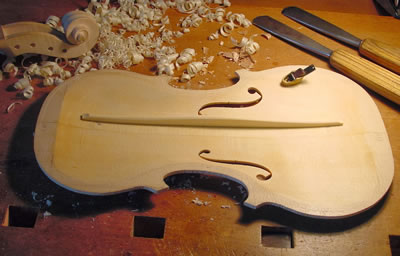
Body& soundbox. The body of the violin is composed of a top plate, a back plate, and a rib, which is the main part of the violin and the main part of the pronunciation. Learn more about the production process.
Bout& c-bout. The two relatively wide parts of the violin body are called the upper bout and the lower bout, and the narrower part of the middle waist is called the center bout. One of the famous violins made by Guarneri, the upper bout is 166mm, the middle bout plate is 110mm, and the lower bout is 203mm.
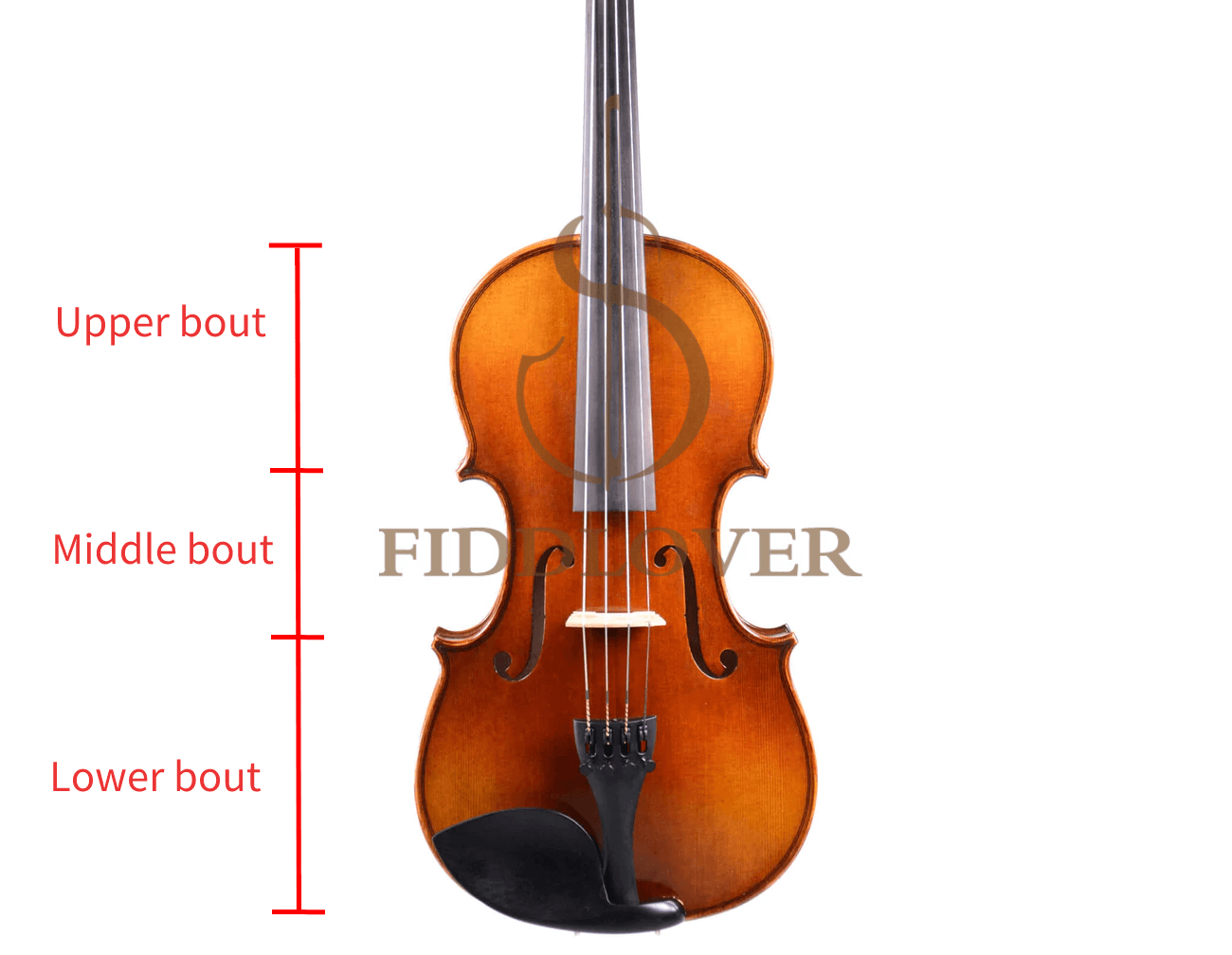
Bow. A wooden bar with a certain arc. Generally, the wood used to make the bow is Brazilian wood, and the low-end bow will be replaced by other woods; the bow generally has 150-200 horsehair, and the horsehair uses white male horsetail hair, and the low-end bow will use other colors horsehair or other materials instead. There are also bows made of carbon fiber, which are lightweight and environmentally friendly. View all bows.
Bridge. The bridge supports the strings and holds them over the body of the instrument under tension and transmits the vibration of those strings to the violin body which amplifies the vibrations into sound. The bridge is made of maple wood. A good bridge needs to be adjusted according to the overall condition of the violin during installation, that is one bridge for one violin. Some low-end violin bridges are unified and unmade prototypes. (In the initial stage, the bridge is only a wooden block in the shape of the bridge, which requires fine trimming to make it into a usable bridge, and the cost gap between the two will reach ten times)
C
Case. A strip-shaped container for carrying and protecting a violin. There are many styles, pay attention to a few points when choosing: the outer shell needs to be waterproof and not afraid of scratches, the inner lining needs to be hard to prevent the violin from being squeezed by external forces, and the inner lining surface needs a thin layer of soft cloth to avoid damage to the violin. There are also soft-lined cases, which are generally used for instruments such as guitars and basses, and are not recommended for violins. All cases sold in our store are hard-lined. view all cases.
Chin rest. This is the contoured piece of wood or plastic that attaches to the bottom of a violin or viola. When playing, the player's chin can be placed on it, which can reduce pressure and prevent sweat from directly contacting the violin body.
D
Dampit. A type of simple humidifier that consists of a rubbery tube with a long sponge inside. After wetting it (distilled water, ordinary water is also fine), insert it through the F-holes, remember to leave a section at the end to prevent the entire dampit from falling into the violin body.
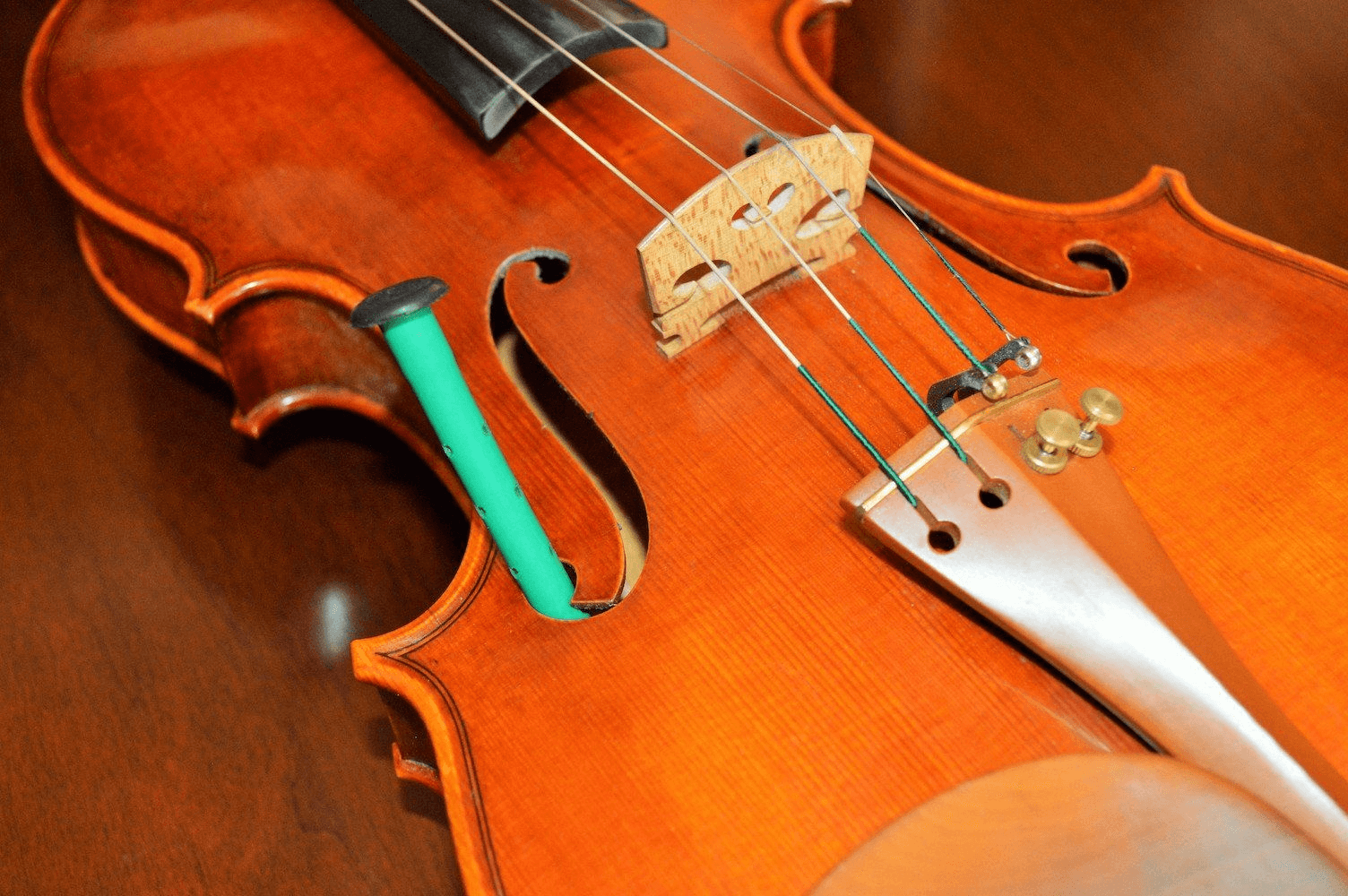
E
Eye. The decorative circle of usually inlaid metal and/or mother of pearl on both sides of the frog.

F
F-holes. Also referred to as sound holes, these are a pair of mirror-image F-shaped openings in the center of the front plate. When the top is initially processed, the position of the sound hole should be determined, so that the thickness of the top plate around the sound hole can be better controlled. The styles of sound holes are different, some are narrow, some are wide, some are round at both ends, and some are oval at both ends. These slight differences don’t affect the sound of the violin. Generally speaking, the sound holes are narrow and long, symmetrically distributed on both sides of the violin. Learn more about our craft.
Ferrule. This D-shaped metal ring holds and strengthens where the bow hairs reach the frog. It protects the ebony frog from splitting and the hairs from coming loose.
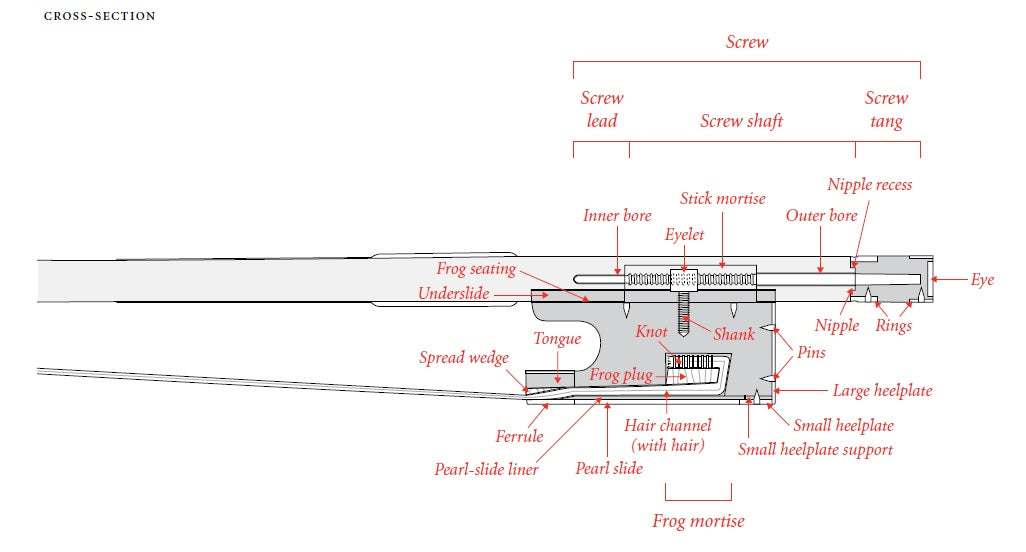
Fine Tune. It is a device for adjusting the tone. Different from the large adjustment of the peg, the fine tune is a small adjustment and works together with the ball end. In addition, the fine tune is inside the tailpiece, and some are sticking out. As shown.
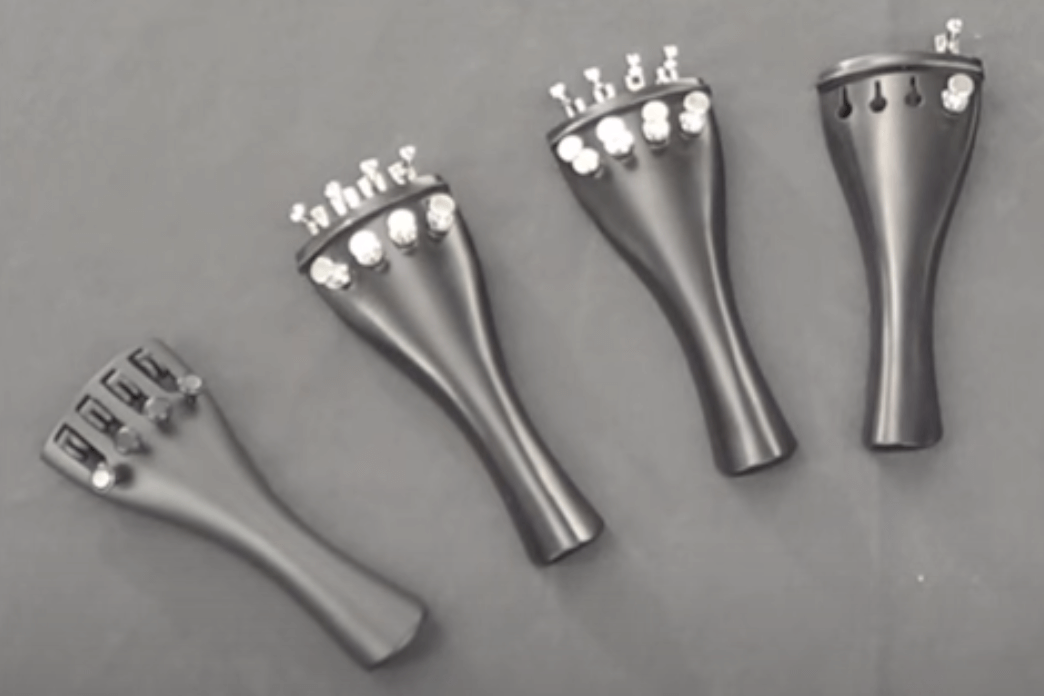
Fingerboard. The fingerboard is generally made of ebony because ebony has good hardness, beauty, and wear resistance. Low-end violins will be replaced by other woods, and then painted with a layer of black paint to pretend ebony. It is a place for fingers to press the strings, and it also has the effect of increasing the strength of the neck.
Flame& Tiger stripes. This is the level of figuring in the wood, which is made from the rings in the tree as it grew over many years. In general, the denser and more uniform the grain is, the more beautiful the wood is, the better the wood, and the more expensive it is. Some low-end violins will draw tiger stripes by color painting.
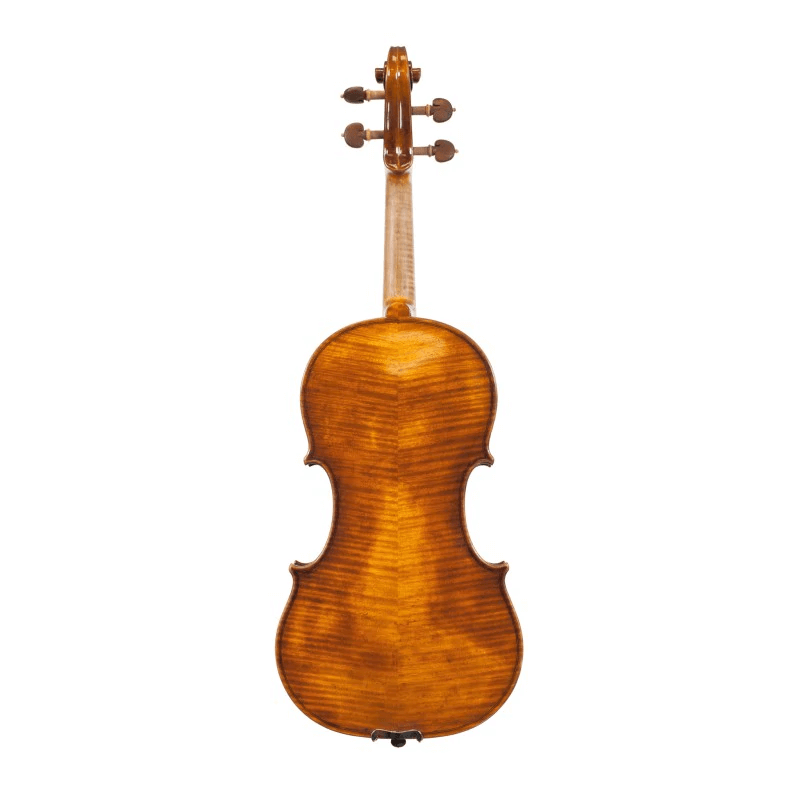
Fret. A device for assisting playing. The guitar is used more, the violin is not commonly used. Beginners can use fret to help them familiarize themselves with scales. Because fret will affect the vibration of the strings, all our beginner violin sets come with a sticker guide to replace it ( It's a sticker, not hard-shell plastic, thinner than fret).
Frog. The block at the root of the bow, usually made of ebony, is where the fingers hold the bow. There is a screw on the tail that can be moved to tighten or loosen the bow. There are many kinds of materials for decorative accessories on frogs, such as mother of pearl, German silver, silver, or even gold. (Please don't use decorations made from wild animals! !)

G
Grip. When using the bow, the place where the hand pinches the bow. The grip is composed of a cushion and a winding wire. The cushion is generally made of leather or imitation leather. The material of the winding wire is metal wire, plastic, and so on. We try to avoid animal products in our bow-making.

H
Hair. The main component of the bow, which comes into contact with the strings when played, is made of hair from the tail of a real horse. Generally, the horsetail of a male horse from the Siberian or Chinese prairie is selected, and some low-end bows will use synthetic strands instead. Hair is relatively environmentally friendly because the hair of a horse's tail can be regrown.
Heel. Under the neck, the wooden block used to strengthen the neck is named for its nearly 90-degree angle and resemblance to a human heel. The heel on the bow refers to Frog.
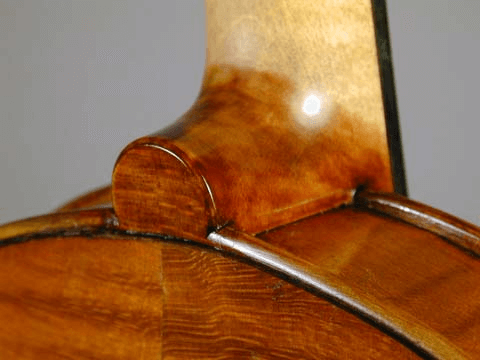
Hygrometer. A dial instrument, similar to a thermometer, that measures the relative humidity of the air. The ideal humidity range for violins and similar instruments is 40% to 60%. Some of our premium cases come with a hygrometer.
N
Neck. The neck is the slender part of the violin, usually made of maple wood. The fingerboard is glued to the neck.
Nut. This is the ebony piece at the start of the fingerboard and the end of the peg box. Four grooves elevate the strings above the fingerboard.
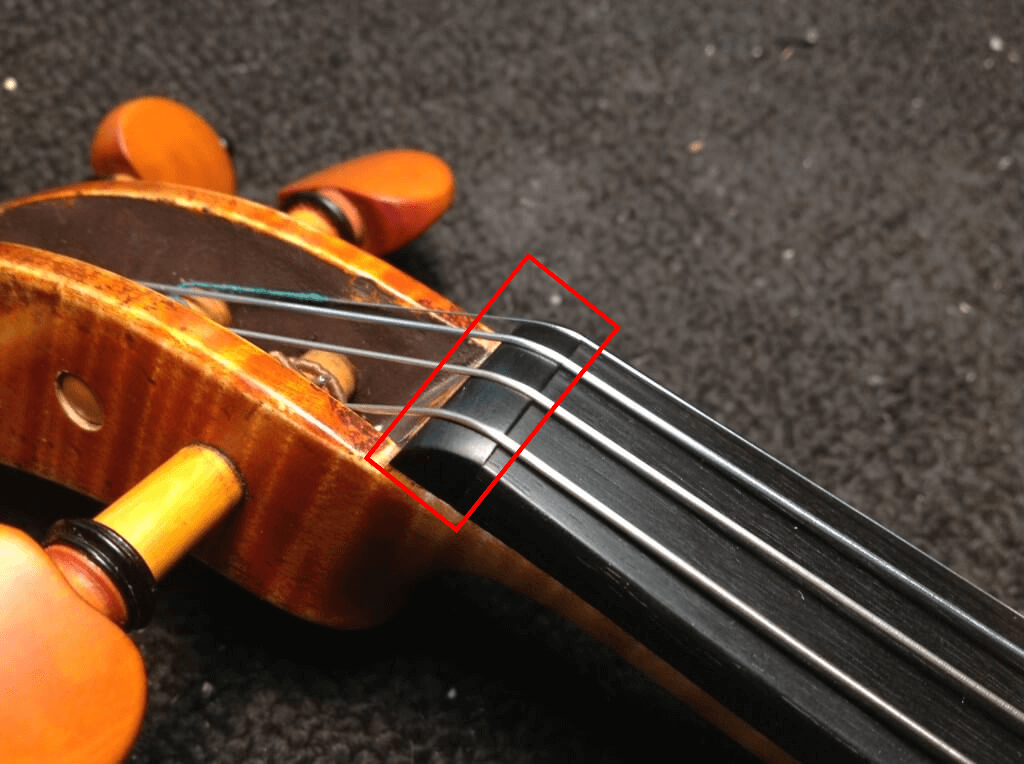
P
Peg. Peg is a cone-shaped block of wood. The pegs hold the strings taut and that tautness causes the string to vibrate at the correct frequency. Most pegs come with heads in round or heart-shaped and they can be decorated with other inlay. Generally made of ebony or jujube wood, a common four-string violin has four pegs, the upper right is the A string, the lower right is E, the upper left is D, and the lower left is G.
Purfling. A decoration, usually two thin parallel lines a millimeter or so apart, is placed on the outer entire edge of the top and back plates of a violin. It is usually made of ebony or other black wood. Low-end violins will use colored pencils to draw lines. This is very easy to distinguish, to make real purfling, you need to carve the top plate, so the wood grain will be cut off, observe whether the wood grain on the edge of the violin is broken. In addition, the purfling can play a role in buffering the deformation of the piano body. View how to make purfling.

Plug. This is a small wedge of wood, usually maple or lime wood, that is inserted in both ends of the bow to keep the hairs in place and spread appropriately in a wide ribbon or band.

R
Ribs. The part connecting the top plate and the back plate is composed of three parts: corner wood, side plate, and inner side strip. The height of the Ribs has a great influence on the air capacity of the violin body. Generally, there is an ideal space of 2000 cubic centimeters in the violin body. Learn more about the production process of ribs.
Rosin. Rubbing rosin on the bow can increase friction and make the strum easier to sound. Good rosin has a moderate viscosity, low dust, and durability. In principle, different colors have little effect, but some players use different colors of rosin in summer and winter:
Hard, light color = low viscosity = suitable for summer (humid, hot) = high music instruments
Soft, dark color = high viscosity = suitable for winter (dry, cold) = bass instruments
S
Saddle. A saddle is a small rectangular block of wood, often crafted of ebony, which helps relieve the pressure exerted on the violin's body by the force of the string tension. It is found at the end of the violin under or next to the chin rest and supports the tailgut.
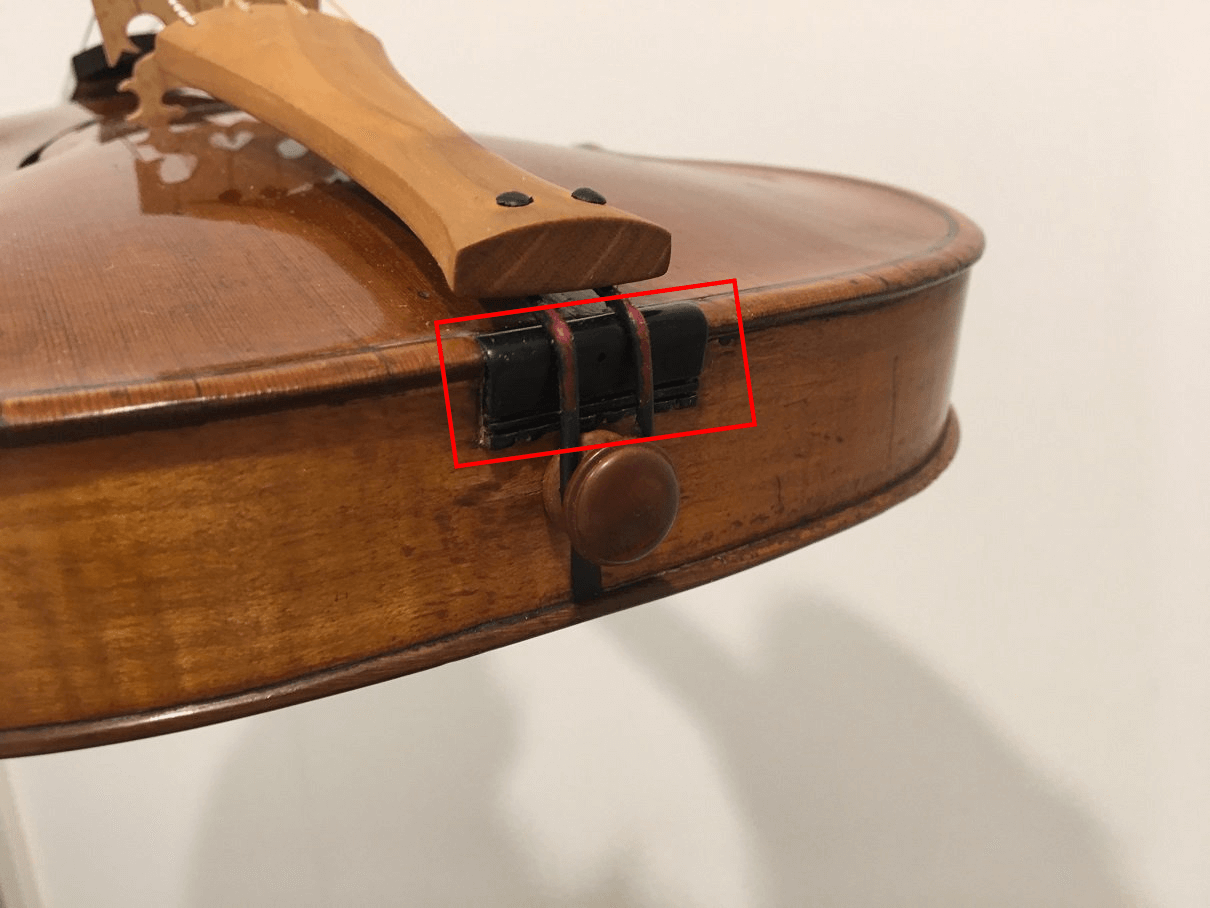
Scroll& Fiddle head& Violin head. A scroll is the decoratively carved beginning of the neck of certain stringed instruments, mainly members of the violin family. The scroll is typically carved in the shape of a volute (a rolled-up spiral) according to a canonical pattern, such as portraits, or animal portraits. The production of the scroll is a very laborious thing. Generally, the apprentice makes the prototype first, and then the master makes it finely. It does not affect the sound, mainly the appearance is different. View how to make a scroll.
Set up. Set up is the overall fine-tuning of the violin to optimize the performance of the violin. Just like making a violin, setting is not a bunch of rigorous data, but a dynamic balance process that needs to be adjusted according to different situations, and is also a process of familiarizing yourself with the performance of your violin. View our 11-point adjustment.
Shoulder rest. The shoulder rest is an add-on component of the violin that aids in holding the violin and sparing the shoulder and neck tension. Our violin sets come with a shoulder rest, view ALL SHOULDER.
Soundpost. The sound post or soundpost is a dowel inside the instrument under the treble end of the bridge, spanning the space between the top and back plates and held in place by friction. Generally made of white pine, or choose the same piece of wood for the top plate.
Stick. The main part of the violin bow, which plays the role of support and fixation. Modern bows have a certain curvature, are generally made of wood (the best wood is Brazilian wood) or carbon fiber, and come in round and octagonal shapes. View ALL BOWS.
Strings. Where the violin vibrates. The earliest strings were made of sheep intestines, which later evolved into metal production or nylon production. View ALL STRINGS.
Spindle Carver. This is a type of carving tool designed for intricate, detailed work, often involving the shaping of small, cylindrical, or complex components. It might have been used in your ancestors' factory for carving decorative violin scrolls or other fine details.
Spindle Sander. A spindle sander is a woodworking tool with a cylindrical sanding drum that rotates and often oscillates up and down. It’s great for smoothing curves, contours, and edges—essential for shaping violin components like the body or neck.
The above two tools are ordinary crafting tools, but they can be used for violin making.
T
Tailpiece. The tailpiece is the device at the end of the violin used to connect the strings. The fine tune is on the tailpiece. It is usually made of harder wood, such as ebony, but also carbon fiber. Sometimes there are simple decorations on the tailgate, such as inlaid gold, mother of pearl, or some signs.
Tailwire. The cord attaches to the bottom of the tailpiece, over the saddle, and around the endpin.
Tip. The head of the bow, is slightly sharp, be careful not to touch others.
V
Varnish. The varnish is the last step after the violin is made. It is divided into primer and topcoat. The primer has a certain influence on the sound. Varnish mainly affects appearance, there are many styles of varnish, the most popular of which is the retro style, it may be that everyone wants to play an antique violin with a long history. Learn more about how to paint.






1 comment
My ancestors’ violin-making factory in Columbus (Jackson-Guldan Violin Company) referred to “spindle carver” and “spindle sander.” Even though I’ve played the violin for most of my life, I don’t know what a “spindle” is. Do you?
Thanks!
Ann Bigelow